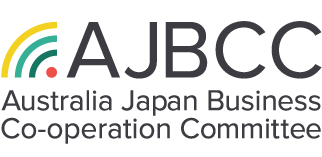27 Sep Japan’s Economic Security (2): Supply Chain Disruption
Part 1 of the article on Japan’s Economic Security looked at Energy. It is available here.
With the coronavirus causing global disruptions on the global supply chain and global trade, Japan is looking to secure its economic security to prepare for future global issues. The coronavirus has been a wakeup call for Japan and their reliance on foreign imports of key resources/commodities.
Specifically, the coronavirus has exposed Japan’s reliance on imports for medical supplies. The Japanese government is working with over 400 of their domestic companies to produce medical supplies locally and increase their economic security.
This list shows some of the medical related goods that Japan imports, the percentage of imports, and the countries from which they import:
- 50% of drug ingredients to create medicine (South Korea, China, Italy)
- 90% of their ventilators (Europe, US)
- 30% of N95 masks (China)
- 70-80% of surgical masks (China)
- 100% of cotton buds for PCR testing (Italy, US)
- 100% of protective gear (China, Vietnam, US)
At a press conference earlier this year, Prime Minister Abe indicated that for products that are reliant on one country and provide high value add, production will be encouraged to move back to Japan. Even for products that are not a high value add but still reliant on one country, diversification of production bases to ASEAN countries is the target. The Government is supporting this through financial subsidies.
The subsidy, which was introduced as “supply chain reform”, is made up of two programs for which the Ministry of Economy, Trade and Industry (METI) is responsible. The overall goal is to assist Japanese companies to establish “more resilient supply chains”.
Subsidy (1) aims to bring production bases to Japan to increase domestic output (“subsidy to promote domestic investment projects for supply chain measures”), and a total 220 billion yen (about A$3bn) was allocated to this program. More specifically, the subsidy is to financially assist companies who manufacture products or materials that are: (i) currently made in concentrated production bases outside of Japan or (ii) regarded as critical for protecting health of Japanese citizens and are in high demand, to move their production sites to Japan (completely or in addition to existing overseas sites) or to start production in Japan with construction of buildings/plants and facilities.
Subsidy (2) is to financially assist Japanese manufacturers to diversify production sites into ASEAN countries (to build resilient and robust supply chain between Japan and ASEAN countries) in order to add alternative supply sources in the supply chain. 23.5 billion yen (about A$300million) has been allocated to this program. More specifically, the subsidy aims to financially support Japanese companies to shift production into ASEAN countries by building new facilities and conducting feasibility studies.
The overall goal is to secure alternative supplies of:
(i) products such as healthcare products including masks
(ii) materials and parts such as auto parts, electronic parts, medical devices, and rare earth metals.
The thinking behind the Government policy is reflected in the types of companies and products that have been awarded the funding.
In July, the Government announced that 87 companies will receive the 1st round of funding for each subsidy.
Subsidy (1)
Total number of companies: 57 (17 large companies and 40 SMEs)
Most of the companies manufacture medical and healthcare products and equipment such as masks, pharmaceuticals including vaccines, medical devices and medical test kits. However, companies who manufacture parts for the automotive, pharmaceutical and electronics industries as well as agricultural chemicals and fertilisers were also included.
Major large companies include Iris Ohyama (a diversified manufacturer and wholesaler of homewares), Shionogi (a major pharmaceutical manufacturer), Meiji Seika Pharma (pharmaceutical company in the Meiji group – synonymous for food and chocolate products), Sharp, Kaneka (chemical products), Terumo (a major medical products and consumables manufacturer).
Subsidy (2)
Total number of companies: 30 (8 large companies and 22 SMEs)
The ASEAN countries targeted in the first round of the subsidy: Vietnam, Thailand, Malaysia, The Philippines, Myanmar, Laos and Indonesia.
15 of the 30 companies are for projects in Vietnam, and approximately 18 of them manufacture medical and healthcare products. The rest produce rare metals, rare earth magnets, semiconductor parts, auto parts and electronic parts.
Major large companies include HOYA (widely known for its lenses but also a manufacturer of medical equipment) TOYOBO (film, polymer, and pharmaceutical manufacturer) , Sumitomo Rubber Industries, Shin Etsu Chemical (major chemical manufacturer and rare earth magnet producer).




